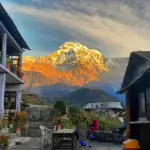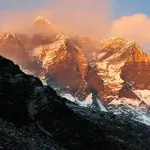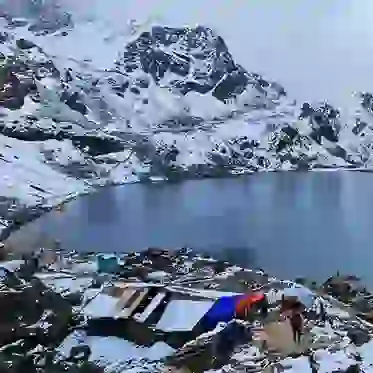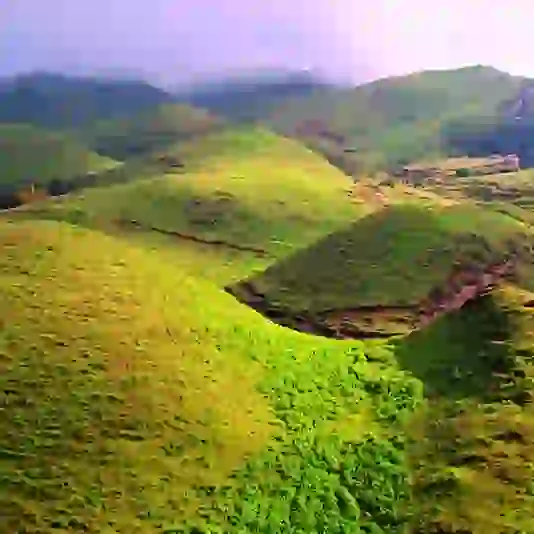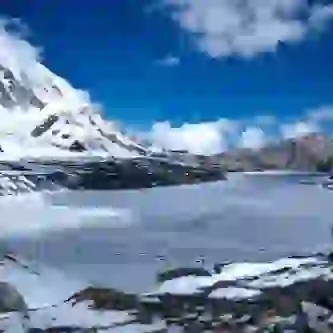The Narayanhiti Palace Museum in Kathmandu, Nepal, is a public museum situated east of the Kaiser Mahal and next to Thamel. The museum was established in 2008, after the 2006 revolution, from the complex of the former Narayanhiti Palace (Narayanhiti Durbar).
Before the revolt, the palace was the monarch's residence and principal place of function, and hosted state occasions. Constructed by King Mahendra in 1963, the current palace complex comprises extensive courtyards, parks, and buildings.
Why the name Narayanhiti Durbar Palace?
The name "Narayanhiti" consists of two phrases: 'Narayana' and 'Hiti '. Narayan is Vishnu, the Hindu god whose temple is opposite the palace.

Narayanhiti Palace: Royal Elegance Preserved
Credit:stuningnepal.com
'Hiti' means 'river spout' in the Newar Language, which is to the east of the main gate in the palace precincts, a landmark that figures prominently in the local legends.
History of Narayanhiti Durbar Palace
The royal palace is known to have been the home to several former kings and queens.
Early Residences
The location of the palace changed hands many times before royalty inhabited it. During the early Shah era, the Shreepali Basnet family occupied the site.
Ownership passed to Premier Fateh Jung Shah after Dhokal Singh Basnyat; his aunt, Choutaria Pran Shah, also lived in the house.

Narayanhiti: Regal Legacy Echoes
Credit:woundersofnepal.com
On 19 September 1846, Fateh was killed in the Kot massacre, and his family were expelled or banished from Kathmandu. Colonel Ranodip Singh Kunwar, Jung Bahadur Rana's brother, took over the property and palace, moving into Choutaria 's residence after limited renovations.
The building was restored after Ranodip became prime minister in 1877, and enlarged into a luxurious multi-wing palace.
Ranodip was murdered in the southern wing of the palace after the coup d'état on 22 November 1885.
Royal Residence
Bir Shumsher Jang Bahadur replaced Ranodip Rana as Prime Minister and took over the palace. Bir Shumsher ordered the demolition of the old palace in 1886, and a new one, designed by the architect Jogbir Sthapit, was built as a residence for his son-in-law, King Prithvi Bir Bikram Shah.
That relocated the Hanuman Dhoka Durbar, the royal residence, to Narayanhiti.In the Nepal–Bihar earthquake of 1934, the palace was damaged, killing King Tribhuvan's two infant daughters.
Colonel Surya Jung Thapa, an architect, oversaw maintenance and improvements that added a new entrance and a grand staircase.
In 1963, King Mahendra ordered the destruction of the palace and its reconstruction. The new palace was designed by the Indian-born American architect Benjamin Polk.
Nepalese architectural styles were used to create a national symbol. However, the building ceased in 1969. On 27 February 1970, Griha Pravesh (a housewarming party) was performed for Crown Prince Birendra's wedding.
In 1972, Mahendra sold the palace for NPR 70 million (7 crores) to the Government of Nepal. He claimed the estate was the dowry of his paternal grandmother, Queen Divyeshwari.
Crown Prince Dipendra assassinated numerous members of the royal family in the palace on 1 June 2001, before killing himself. King Birendra and Queen Aishwarya were among those killed.
2006's Revolution and Reuse as a Museum
Following the 2006 Revolution, the Nepalese monarchy was abolished. Narayanhiti was vacated on 11 June 2008 by the last King, Gyanendra.
The former royal palace was later used to house the new Palace Museum in Narayanhiti. In October 2018 the royal crown jewels were showcased.
Interior of Narayanhiti Durbar Palace
The palace stands on 3,794 m2 of floor space (40,838.28 sq ft) and is divided into three equal parts; the guest wing, the state wing, and the private wing.
Narayanhiti Palace has exactly 52 rooms called Sadan and is named after 75 of Nepal's districts. The palace interiors are based on the Late Victorian style.
Reception Hall
Narayanhiti Palace Reception Hall is named Kaski Sadan after the Kaski District. The hall is decorated with two full-size Bengal Tiger taxidermies in a charging posture, hunted by the King.
Mahendra and King Birendra, along with Shah Monarchs' life-size portraits, are displayed throughout the stairs by artist Amar Chitrakar.
Narayanhiti Museum: History Preserved, Stories Told
Credit:Nepalnews.com
Gaurishankar Gate opens onto Kaski Sadan, and it is there that the Shah Monarchs of Nepal gave the political audience and held the oath-taking ceremony for the prime minister and heads of constitutional bodies of the Kingdom of Nepal.
Throne Room
The Gorkha Baithak Throne Room is the centre of the palace. It stands just above Kaski Baithak.
Gorkha Baithak's construction is based on the Hindu temple architectural style, with a 48-foot chandelier hanging from a 60-foot Pagoda-style ceiling, supported by four concrete columns representing Nāga, decorated with garish Hindu deities, Astha Matrikas and Ashta Bhairava.
It is beneath this high ceiling that the Kingdom of Nepal Throne was placed. It is this room where the monarch gave the Royal Proclamation on special occasions.
On the right of the Gorkha Baithak is Dolpa Sadan. It was used as the room for the royal family's uninvited guests to view Gorkha Baithak's proceedings through a one-way mirror.
Ceremonies held inside Narayanhiti Durbar Palace
The Narayanhiti Durbar was open to the public during the Dashain festival, during which the former Kings offered darshan and teeka to government officials, high-level officials, and the general public.
Narayanhiti Durbar Palace Museum
Narayanhiti Durbar Palace Museum stands as a significant symbol of Nepal’s political transformation, marking the establishment of the Federal Democratic Republic of Nepal. This pivotal shift was the result of a decade-long people's war and the historic 19-day people's movement. In response to these political changes, the former Narayanhiti Royal Palace was repurposed as the Narayanhiti Durbar Palace Museum.
The museum was officially inaugurated on 15 June 2008 by then Prime Minister Girija Prasad Koirala, marking a new era for this historic landmark. Following the inauguration, the Narayanhiti Durbar Palace Museum was formally opened to the public on 26 February 2009 by Prime Minister Pushpa Kamal Dahal "Prachanda".
Today, the Narayanhiti Durbar Palace Museum serves as an essential cultural and historical site, offering visitors a glimpse into Nepal's royal past and the significant political changes that reshaped the nation.
Narayanhiti Durbar Palace Museum Tickets Price in 2025
Every day, thousands of people from Nepal and other countries visit the Narayanhiti Durbar Palace Museum. However, the ticket price may vary from country to country. The ticket prices are distributed as follows:
- Rs 50 (Nepali Students)
- Rs.200 (Nepali Citizens)
- Rs.500 (SAARC & Chinese Nationals)
- Rs.1000 (All other Foreigners)
Opening Days and Times of Narayanhiti Durbar Palace Museum
The Naryanhiti Durbar Palace Museum is open to the general public 6 days a week. The Narayanhiti Palace Museum is closed on Wednesday. From Thursday to Monday, the Naraynhiti Palace Museum is open from 10:30 AM to 2:30 PM; on Tuesday, it is open from 10:30 AM to 1:30 PM.
What is Narayanhiti Durbar Palace?
Narayanhiti Durbar Palace was the royal palace of the Shah Kings of Nepal, located in the heart of Kathmandu. It served as the residence and administrative center for the royal family until the monarchy was abolished in 2008.
When was the Narayanhiti Durbar Palace built?
The construction of the palace began in 1963 and was completed in the early 1970s. It was designed to reflect the grandeur of Nepal's monarchy and has a mix of Western and Nepali architectural styles.
What is the Narayanhiti Durbar Palace Museum?
After the monarchy was abolished, the palace was turned into a museum in 2009, preserving the history and heritage of the Nepali monarchy. It showcases artifacts, royal belongings, and personal items of the late royal family.
What can visitors see at the Narayanhiti Durbar Palace Museum?
Visitors can explore various sections of the museum, including the king's throne room, royal chambers, and the museum's collection of art, furniture, and historical items. Special exhibits highlight Nepal's royal history and the monarchy's role in the country's development.
Is there an entry fee for the Narayanhiti Durbar Palace Museum?
Yes, there is an entry fee for the museum. The price varies depending on whether the visitor is a local or an international tourist. It's best to check for the most current fees before planning your visit.
What are the opening hours of the Narayanhiti Durbar Palace Museum?
The museum is typically open every day except for public holidays. The usual visiting hours are from 10:30 AM to 2:30 PM, but it is advisable to check in advance for any changes or special holiday hours.



